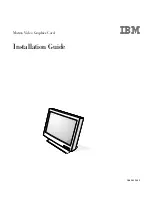
APPENDIX A: Registers for PCIe8g3 S5
Registers, UI
EDT, Inc.
2017 January 04
20
0x10–11 DMA Channel Enable
0x16–17 Least Significant Bit First
0x18–19 Underflow
0x1A–1B Overflow
Access / Notes:
16-bit read-write / SSD16_CHEN
Bit
Access
Name
Description
15–0
RW
CH_ENABLE[15–0]
Set or clear the appropriate bit to enable or reset the corresponding DMA channel:
- Set bit 12 to transmit data to port 4; clear to reset.
- Set bit 11 to transmit data to port 3; clear to reset.
- Set bit 10 to transmit data to port 2; clear to reset.
- Set bit 9 to transmit data to port 1; clear to reset.
- Set bit 8 to transmit data to port 0; clear to reset.
- Set bit 4 to receive data from port 4; clear to reset.
- Set bit 3 to receive data from port 3; clear to reset.
- Set bit 2 to receive data from port 2; clear to reset.
- Set bit 1 to receive data from port 1; clear to reset.
- Set bit 0 to receive data from port 0; clear to reset.
Access / Notes:
16-bit read-write / SSD16_LSB
Registers 0x0D, 0x0F, and 0x16 all can affect how data is ordered.
Bit
Access
Name
Description
15–0
RW
LSB_FIRST[5–0]
When set for a DMA channel, the least significant bit of the 32-bit data word is first, and the most
significant bit is last; when clear, the most significant bit of a 32-bit word is first.
Access / Notes:
16-bit read-only / SSD16_UNDER
Bit
Access
Name
Description
15–0
R only
UNDERFLOW[12 –0]
A value of 1 in a bit indicates that the corresponding DMA channel’s internal FIFO has underflowed
since the channel was last enabled. Underflow causes the corresponding DMA channel to transmit the
last valid byte repeatedly until it receives new DMA data. To reset, clear and reenable the appropriate
channel (see
).
Access / Notes:
16-bit read-only / SSD16_OVER
Bit
Access
Name
Description
15–0
R only
OVERFLOW[12–0]
A value of 1 in a bit indicates that the corresponding DMA channel’s internal FIFO has overflowed since
the channel was last enabled. Data received while the FIFO is in overflow is discarded. To reset, clear
and reenable the appropriate channel (see
and
















































